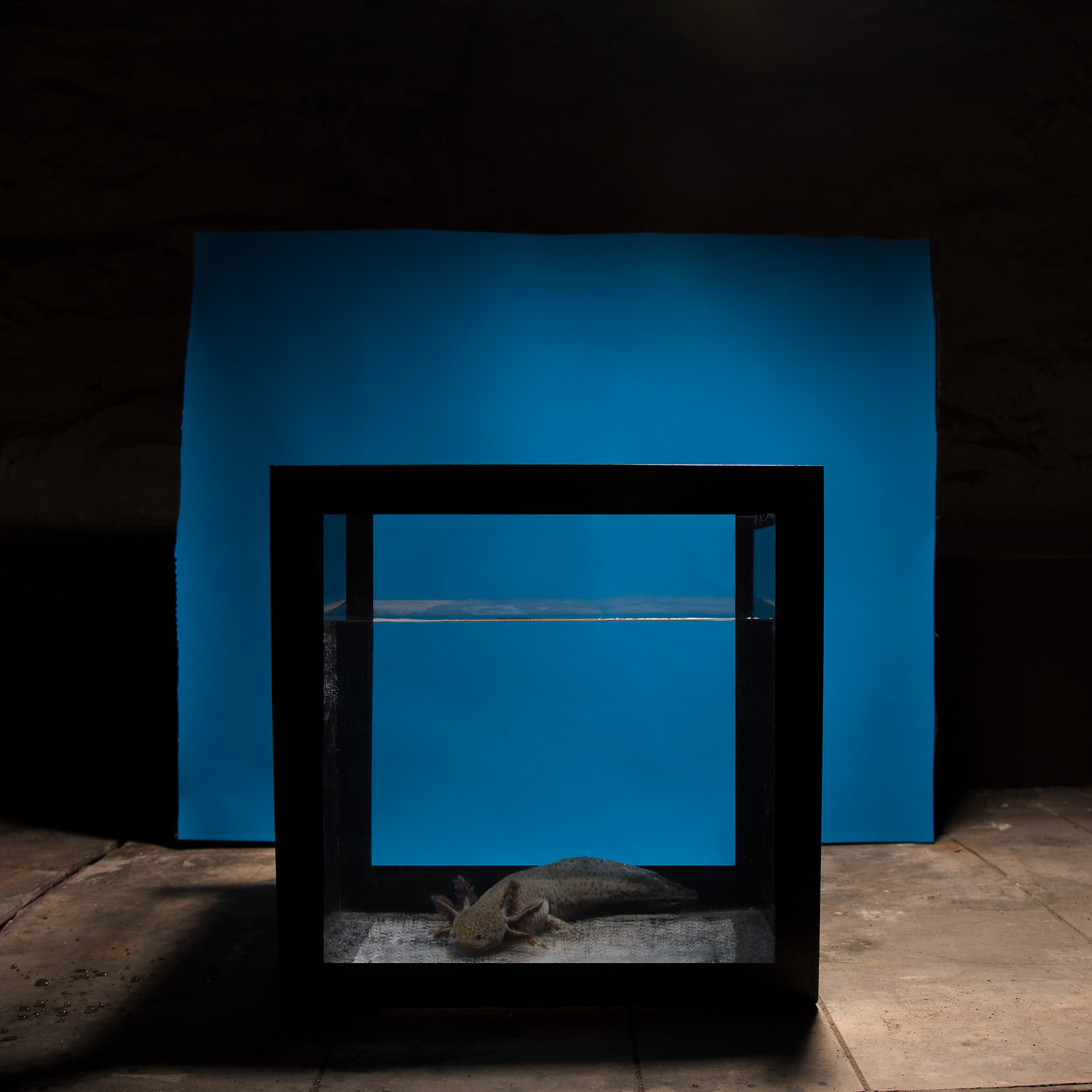︎︎︎ ︎








I’ve spent most of my life admiring animals in books, on television, and behind glass displays in Museums. Ever since I was young I would look at these museum specimens, these individuals, and imagine where they were from. In my mind, it is always the ideal habitat for these creatures.
They are flourishing.
After reading The Sixth Extinction: An Unnatural History by Elizabeth Kolbert I learned about the plight of the Panamanian Golden Frog. Kolbert talks about how the entire Panamanian golden frog species had to be removed from its habitat due to an invasive lethal fungus. The entire species was regulated to live in a climate-controlled trailer in Panama. Because there is no chance the fungus will leave the ancestral home of the Panamanian Golden Frog, they are now stuck in captivity. They are just one example.
I now started imagining vastly different habitats from my youth. I wanted to see these.
For this series, I commissioned 6 watertight acrylic cubes. I then hand-painted black trim on them as a reference to pet stores aesthetics. I focused on putting reptiles, amphibians, and fish into the cubes as they are species most at risk in the Anthropocene. The cubes helped me isolate these organisms from anything natural other than their forms.
To acquire animals to model in this series, I reached out to pet owners/breeders on my local Craigslist. This led to interesting thoughts as well about life in the Anthropocene for Non-Humans. The species not at risk of extinction face strange means of existence; being bought and sold as goods, moved across the earth for another species hobby, food, pest control, etc. They’re shipped and acquired just as easily as an Amazon Prime package.
This work is a visual expression of how I feel about the fact that numerous species now face an existential crisis. They can continue existence in captivity ad nauseam with no hope of returning to a wild world or face extinction. It is also an exploration as to where non-threatened “wild” animals exist now. All of these animals were acquired in Pittsburgh, PA and none of them are native. How is it that a small city in Western Pennsylvania has a stock of these animals for sale?